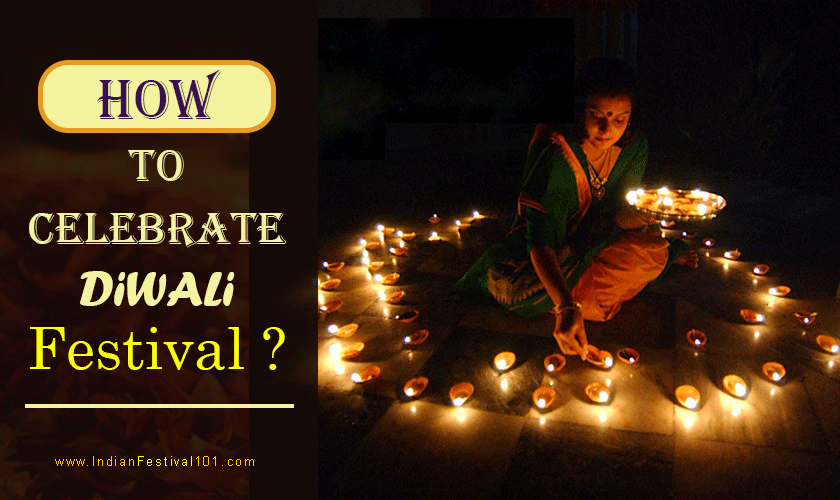One of the most popular and widely celebrated festivals in India and other nations is Diwali, sometimes referred to as the festival of lights. The celebration, which takes place over five days, often occurs in late October or early November. Diwali is an occasion where we celebrate the victory of good over evil, of knowledge over ignorance, and of light over darkness. How to celebrate Diwali and make the most of this festive season will be covered in this post.
Diwali Preparation
Diwali preparations usually start weeks in advance. Homes are cleaned and embellished with flowers, rangoli patterns, and bright lights. New clothing, jewellery, and treats are all purchased. Ladoos, kaju katli, and chakli are examples of traditional Diwali foods that are made at home.
Diwali Decoration and Lightings
The festival of Lights Diwali is celebrated with full of excitement. The decoration is the main attraction of the festivals. You can choose a theme for Diwali decoration. Diwali decoration starts from the entrance gate, window, and dining table. Of course, Rangoli decoration on Diwali fulfils the needs of the festival. Know More about Best Diwali Decoration Ideas
Diwali Rituals and Pooja
Diwali is a day festival. The Rituals and Puja for Diwali festival is planned for all 5 days of Diwali. People decorate their homes with Diyas, candles, and colourful lights on the first day of Diwali to welcome the goddess of riches and prosperity, Goddess Lakshmi. People clean and decorate their homes with rangolis and flowers on the second day, which is known as Choti Diwali. The major day of Diwali, often referred to as Lakshmi Puja, is the third day. People hold pujas, light candles, and Diyas, offer sweets to Goddess Lakshmi, and pray on this day. Know more: 5 Days of Diwali Festival
Exchanging Gifts and Sweets
An important Diwali ritual involves exchanging presents and sweets. As a sign of love and respect, people give gifts and treats to their family, friends, and coworkers. This custom strengthens the bonds of friendship and affection that exist among people.
Diwali Celebration
Diwali celebrations can be made more beautiful by adding different activities. inviting friends and neighbours, Organising Diwali parties, Dance and music.
Bursting Fireworks
Diwali celebration is incomplete without bursting firecrackers. Sparklers and fireworks are an essential part of the Diwali celebrations. In order to make this auspicious occasion exciting and joyful, people burn different types of firecrackers.
Attend Events and Cultural Programs
Another method to celebrate Diwali is by going to temples and taking part in neighbourhood celebrations. During Diwali, a lot of temples host special pujas and prayers, and people flock there to ask the gods for their blessings. During Diwali, local events like fairs, exhibitions, and cultural programs are also organized. These gatherings foster harmony and diversity while bringing people together.
Organise Diwali Party
Another method to celebrate Diwali is to throw and attend parties. People create delectable feasts, host friends and relatives, and trade presents and treats. Parties for Diwali are
Social Work By Helping Poor
Diwali festival spreads smiles on every face you can celebrate Diwali by bringing smiles to other faces. you can do some social work, such as helping the poor with Diwali gifts, and sweets,
Diwali Precautions and Safety
Diwali is a family-orientated festival. The lights make it a very warm and atmospheric occasion and it’s observed with much joy and happiness. However, be prepared for lots of loud noise from the fireworks and firecrackers going off.
Air Pollution is a serious concern at the Diwali festival. The air also becomes filled with smoke from the firecrackers, which can add to breathing difficulties. Try to celebrate eco-friendly Diwali. you can avoid chemical-rich firecrackers and use population-free crackers in your Diwali.
Avoid Travelling During Festivals
If you’re visiting India around the time of Diwali, you should always remember that it is one of the Most Important Hindu Festivals in India. So be aware that this is a peak travel time for Indians, not only during the festival but for a couple of weeks afterwards (due to the Diwali school holidays). Trains will be heavily booked and popular destinations will be crowded.
Safety Measures on Diwali
But during Diwali, it’s important to take the appropriate safety measures to avoid fires. Sparklers and fireworks should be used carefully, and kids should be watched at all times. To lessen noise and air pollution, eco-friendly fireworks and sparklers should be chosen over traditional fireworks.
It’s a good idea to protect your hearing with earplugs during Diwali, especially if your ears are sensitive. Some crackers are extremely loud and sound more like explosions. The noise is very damaging to hearing. If you’re in Delhi around the time of Diwali, you may also want to consider wearing a mask as pollution has skyrocketed to unsafe levels in recent years.n recent years.
Also Check: Diwali Festival Wishes
Conclusion
Diwali is a festival of happiness, goodwill, and community. It is a moment to spread love and joy and to rejoice in the triumph of good over evil. We may get the most out of this festive season by adhering to these customs and enjoying Diwali with our loved ones in a way that is secure and responsible. During Diwali, let’s spread light and hope and celebrate the special moments we have with our loved ones.


